
At the end of a gravel road, tucked deep into the woods, bald cypress trees dot the shoreline of Bennett’s Mill Pond. Great blue herons wade in the shallows, searching for their next meal. It’s July in North Carolina, and time on the water would be the perfect way to enjoy some peace and quiet. But not today.
Haley Plaas pulls on a pair of rubber gloves. She lays on the dock and gently reaches her hand in. A mucus-like substance clings to her glove as she pulls back, leaving stringy threads on the water’s surface. While brilliant in color, the network of blue scum across the pond is dangerous cyanobacteria, a type of harmful algae.
Supporter Spotlight
Sometimes confused with aquatic plants like duckweed, cyanobacteria can vary from looking like green or blue-green opaque, thin mats to translucent paint or dye. Blooms pose a threat to the local environment — leading to fish kills, ecosystem damage, and drinking water contamination. They can also cause illness in humans and death among pets and wildlife.
Harmful algal blooms, often called HABs, occur naturally, but human activities increase their frequency and intensity.
HABs feed on nutrient runoff — anything from leaky septic tanks to fertilizers and industrial waste. While the U.S. South has dealt with this for years, it’s a growing global environmental issue exacerbated by climate change. Increased surface temperatures lead to warmer waters, and more extreme storms are followed by periods of drought. That combination is a perfect recipe for the algae — storms increase nutrient runoff into waterways, and then drought leads to stagnant, warm water.
While cyanobacteria directly impact water quality, less is known about how they affect air quality. Enter Plaas, a doctoral candidate in environmental science and engineering at the University of North Carolina Chapel Hill.
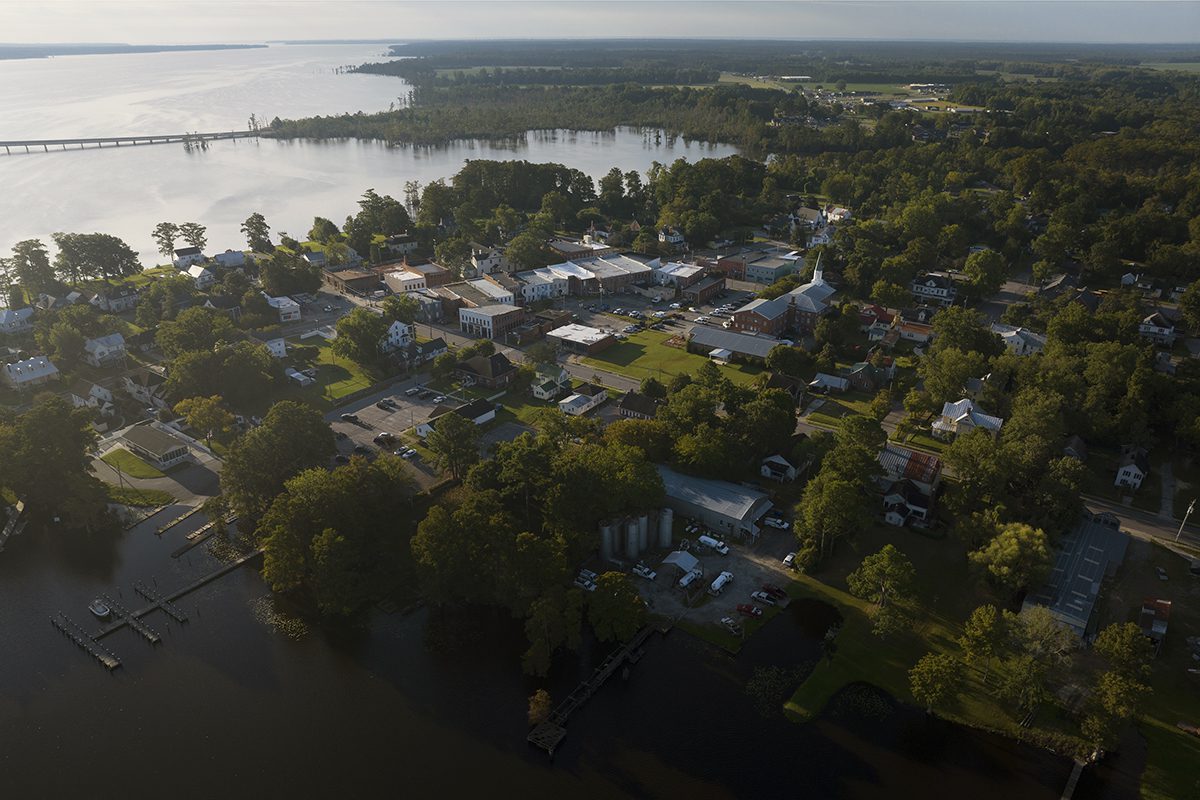
Harmful algal blooms emit cells and chemical compounds that travel as tiny atmospheric particles, called aerosols. Plaas has partnered with the Chowan Edenton Environmental Group, or CEEG, to deploy PurpleAir air sensors along North Carolina’s Chowan River, part of the Albemarle-Pamlico estuarine system. Their goal is to see if blooms correlate with poor air quality due to an increase in these aerosols, and generate a wealth of accessible data in areas that are underreported.
Supporter Spotlight
The PurpleAir project examines air and water quality in the entire Albemarle-Pamlico estuarine system, but its focus is on the Chowan River. Not only does this region experience more blooms than other areas of the state, it also has a high prevalence of asthma among the population.
Additionally, the size of the estuarine system — the second largest in the country — means that high wind and wave action can contribute to toxins moving easily through the river and its tributaries.
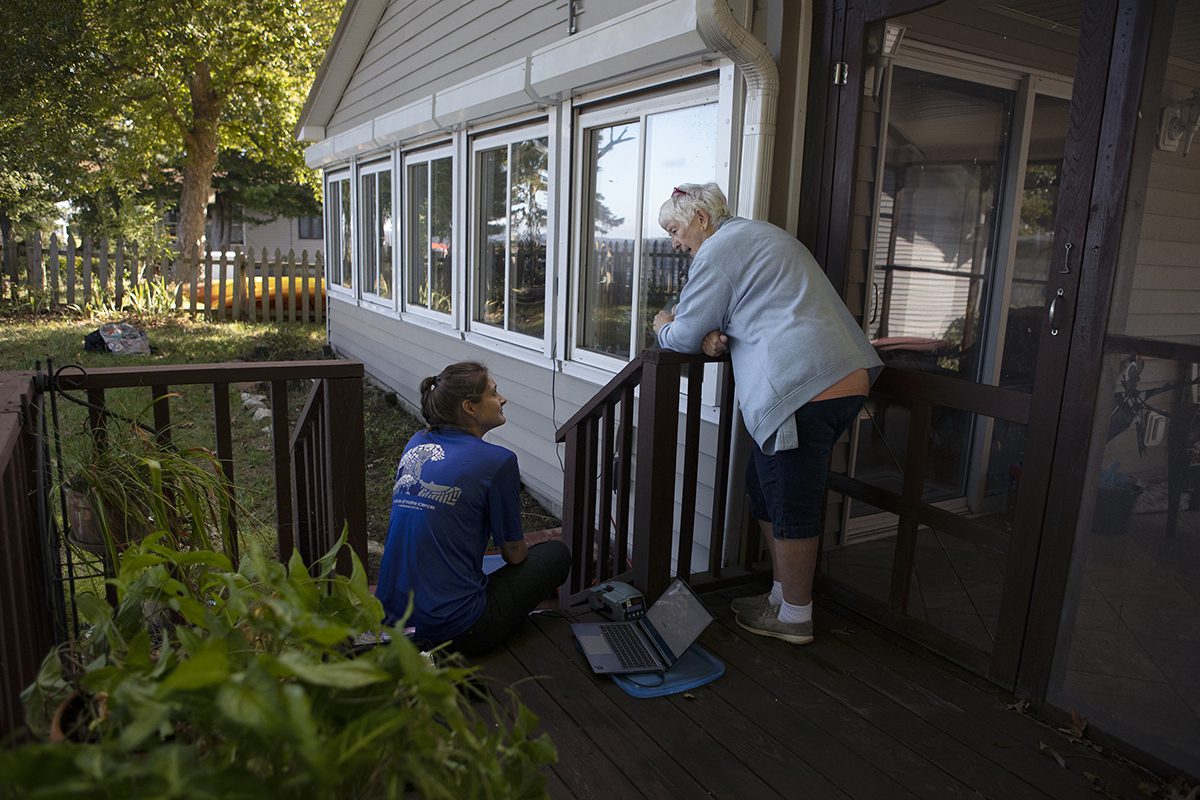
Sending data to the PurpleAir website every 10 minutes, the sensors measure the number of particles in the air, as well as humidity and temperature.
“We don’t have any information about aerosol composition from these sensors, we just know the amount that’s there,” Plaas explained. “But since we’re looking over a big area and over a seasonal trend, we’ll be able to see a cause and effect. If we see a bloom, then in the following days are we seeing increases in aerosol particles?”
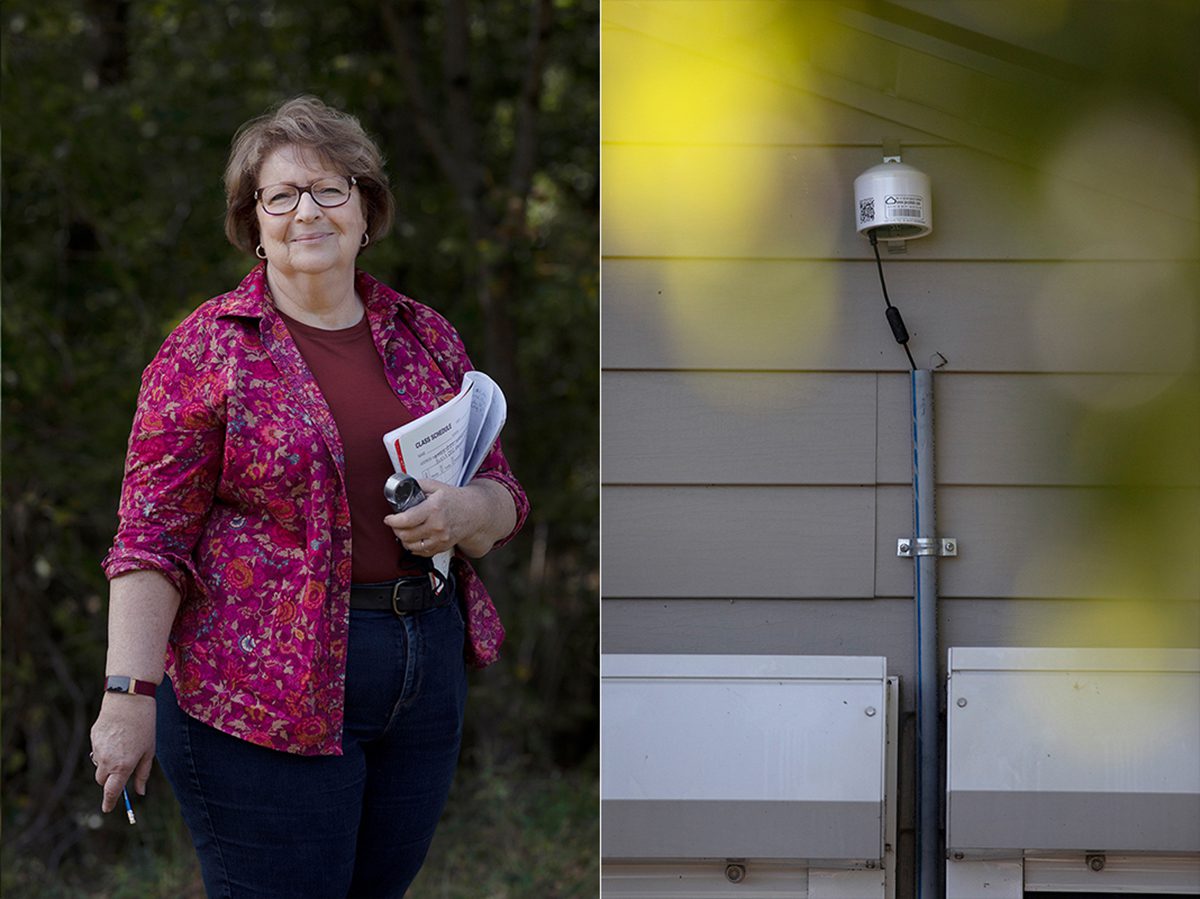
Educating, engaging the public
Chowan Edenton Environmental Group educates the public about environmental issues and supports research efforts in the area.
“Water quality is a key issue here. It’s a big part of our livelihood,” said CEEG Chair Colleen Karl. “It affects the economy — just look at the number of people that commercially and recreationally fish. Farming is tied into it because they use the water for irrigation, among a number of other reasons. There’s also a lot of people that buy houses in the area because they want to be on the water. So it’s a concern for a lot of people.”
Karl, a former high school teacher and science outreach coordinator for North Carolina State University, is passionate about introducing others to the world of environmental research. Today, she brings that same energy to her work with the CEEG.
“One goal of the CEEG is to increase understanding of changes we experience in our local ecosystems,” she said. “We all want the best environmental planning for the communities we call home.”
The group partners with a myriad of research organizations including the UNC Institute of Marine Sciences, North Carolina Sea Grant, National Oceanic and Atmospheric Administration offices in North and South Carolina, North Carolina State University, the State Climate Office, and the North Carolina Department of Agriculture.
“If we can work with another agency, there’s a lot of mileage we can get out of that. It might come in the form of grant writing or a community event. It might come in the form of a partnership you never even thought about,” Karl said. “For our area especially — in rural Eastern North Carolina — partnerships like that can be vital.”
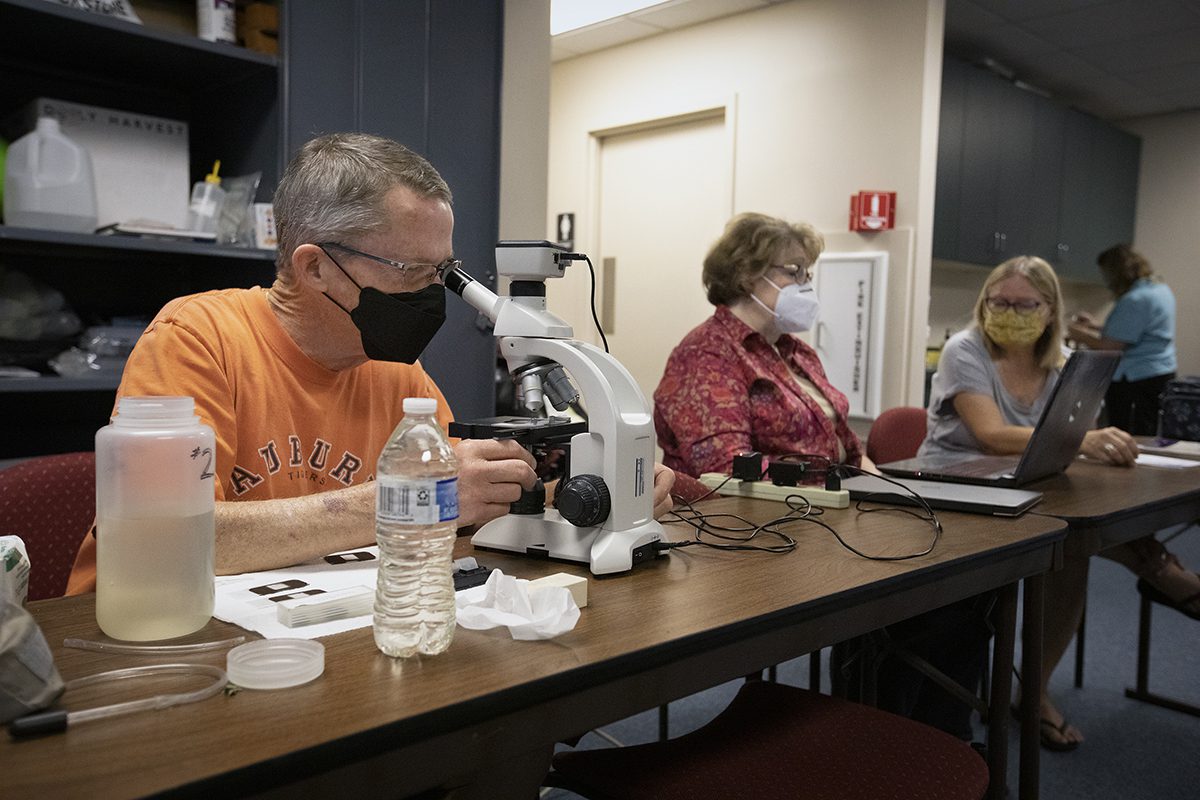
In the study, funded by North Carolina Sea Grant and the Water Resources Institute, Karl engages the community — finding volunteers to host sensors, scouting blooms, collecting water samples, and building local partnerships. Plaas serves as scientific oversight and determines areas to install sensors, conducts lab experiments and builds statistical models for the data.
Barbara Putnam is the operations manager at the Museum of the Albemarle in Elizabeth City. The museum serves 13 counties, interpreting and telling the history of the region. When Putnam was approached about hosting a sensor, she saw a connection between the air quality project and the mission of the museum.
“What better way to preserve history, even if it’s an environmental recording and not the recording of an artifact?” she asked. “You’re taking data from the environment and then creating a history of that.”
Chip Wynns grew up on the Chowan River. His family owned a fish company from the 1950s until it was destroyed by Hurricane Isabel in 2003. He and his wife, Reba Wynns, have lived on the property since 2015.
The Wynnses’ love for the river made it an easy decision to host an air sensor. While they’ve seen water quality issues since living there, it’s much better than years past.
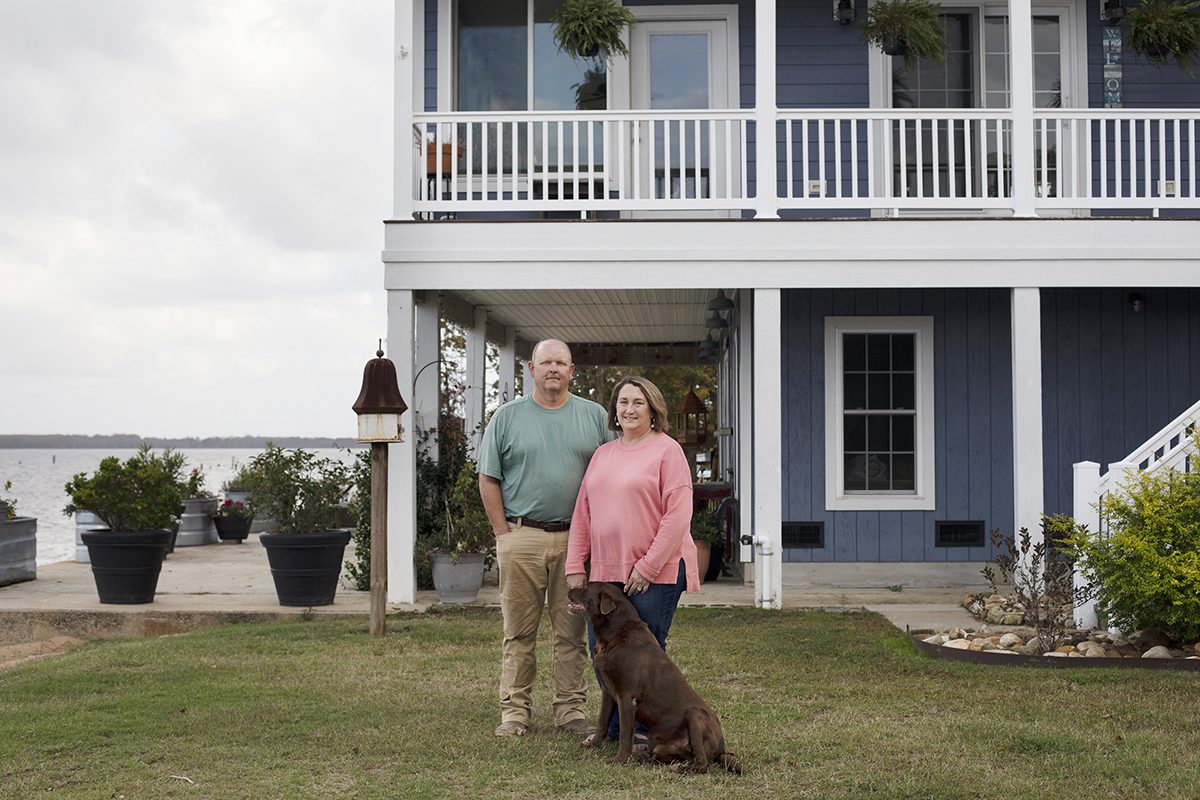
“The 1980s was horrible,” Chip Wynns said. “I remember it looked like fried eggs floating on the water. You could take a stick and pick it up it was so thick — slime, clumps, green, just nasty. There was a lot of debate about why. I think industries took a lot of the hit for that.”
Lois Thompson said air quality is a concern for not only her health, but also her 9-year-old grandson’s. That concern fueled her decision to host an air sensor at her home in Edenton.
“You walk outside and sometimes you say, ‘Oh gosh, I’ve got a headache and I’ve just walked outside,’ and you don’t know what caused that headache. You don’t know if it’s something in your house or if you walked outside and there’s something in the air that you picked up,” she said. “You just want to know how the air is and what’s really going on around you.”

Albemarle Regional Health Services partners with researchers on a number of issues, including HABs. Besides the PurpleAir project, the public health facility is working with researchers at Duke University investigating the links between cyanobacteria and amyotrophic lateral sclerosis, or ALS. Participating in research is a crucial part of serving the Albemarle community, said Health Director Ashely Stoop.
“You cannot be solely academic-driven and you cannot be solely practice-driven,” she said. “You’ve got to look at the data, and that academic component really helps us figure that data side out.”
Collaborations like this are vital to Plaas’ research.
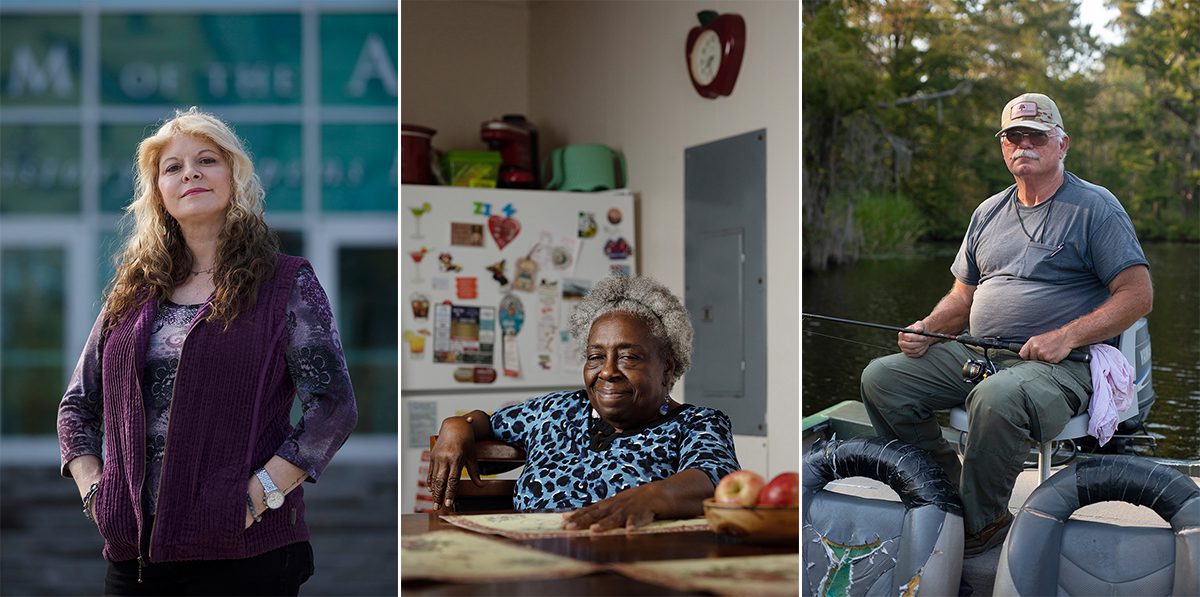
“By directly collaborating with community scientists you’re connected to a network of people who are seeing these environmental issues every day,” she said. “It’s really important to put community members in the driver’s seat.
“I know this can’t be possible for all research, but for a lot of environmental and public health research it’s crucial to get feedback from the communities that you’re hoping to have an impact in.”
Plaas said engaging community scientists is not only practical — they host sensors, collect water samples, and notify authorities when blooms arise — but it’s also ethical.
“I see the intention of science to be seeking knowledge to improve and better our societies,” she said. “I think the only way that you can really know if you are doing research that’s going to improve a community is if you’re getting constant feedback from them the whole time.”
Like her work in the Albemarle Sound, Plaas is also monitoring air and water quality in the San Francisco Bay Delta Estuary to see if harmful algal blooms contribute to air pollution, and if toxins in the water can go airborne. Her experiments in the lab at UNC explore how gasses emitted from blue-green algae might condense in the atmosphere as a liquid and then travel as aerosol.

Know the warning signs
While the signs of a large bloom are obvious, smaller concentrations of cyanobacteria are invisible to the unaided eye. Because of this, it’s important to not only know the visible warning signs, but also recognize when the conditions are ripe for a bloom. HABs prefer slow moving to stagnant, warm water with plentiful nutrient runoff.
Due to wind and wave action, HABs can move quickly through an ecosystem. An area can be healthy one instant and then contaminated in just a few hours. Cyanobacteria are the most common type of harmful algal bloom found in freshwater, although it can occur in brackish or saltwater as well. Historically an issue in hot climates, harmful algal blooms are now found across the globe and in all 50 states.
Stephen Hammer has spent thousands of hours fishing in North Carolina — usually in preparation for bass tournaments. With that much time on the water, Hammer and his peers can share updates to researchers and environmental groups.
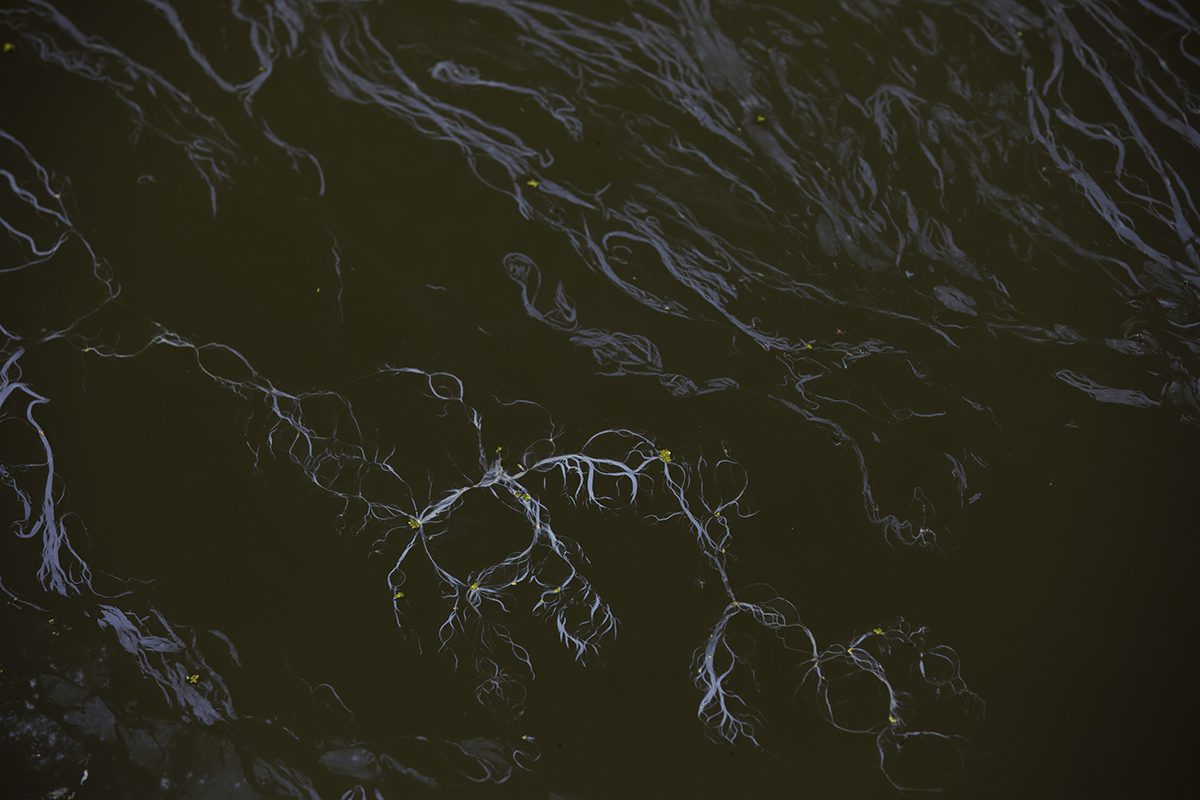
“We’re looking at water quality all the time,” he said. “What color is the water? Is it moving? Is it coming in, is it going out? … If you’ve got algae, you better move ’cause you ’aint gonna catch no damn fish,” he said.
Fish and shellfish can absorb toxins into their bodies, but little is known about the human health risks associated with consuming affected meat. The U.S. Food and Drug Administration recommends trimming the skin, fat, and internal organs — areas where toxins are most likely to accumulate — before cooking fish and to avoid eating the “mustard” of crab. The World Health Organization advises moderation in eating fish exposed to blue-green algae.







